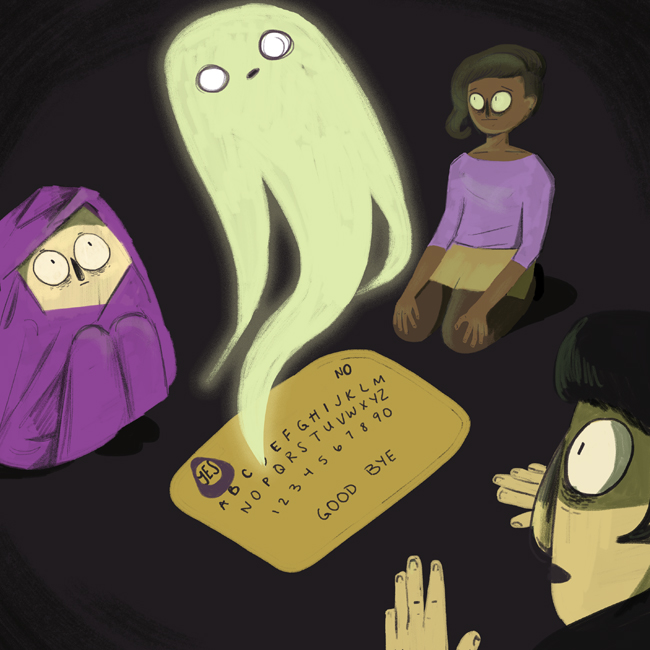With the iOS 8 update this week, UT students can now use their new iPhones to purchase snacks at vending machines across campus, and this is in addition to the set of features that allows owners to communicate instantly with another person from across the globe. The phone can seemingly do anything — short of communicating with the dead.
A phone cannot do anything like that, but maybe a game from Parker Brothers can.
Ouija, which Hollywood has adapted into a movie that comes to theaters Friday, is a game where friends place their hands on a small, mystical piece of plastic called a planchette and summon spirits from the world beyond our own.
This is an extreme case of what is known as facilitated communication, wherein a person or group of people provides words to the speechless. And so, before addressing the question of whether the activity allows people to talk to the dead, one should answer the question of whether facilitated communication allows people to speak with the living.
Many claim that, in addition to ghosts, facilitated communication can allow family members to speak to loved ones who are in comas or who are severely autistic and unable to express themselves using more conventional means.
In order to do this, the “facilitator” takes the other person’s arm, which serves as the planchette, and helps them communicate by pointing to letters on
a keypad.
Like with the Ouija board, it’s unclear who’s doing the bulk of the movement. It could be the communicator — spirit or otherwise — but, just to play it safe, it’s best to double check.
To test this, a study recruited students to facilitate communication with “Jackie,” a man who is mute as a result of a developmental disability. In preparation, the students watched two videos explaining how facilitated communication works and read a one-page document with information about Jackie’s life.
The twist was this: Jackie was not actually developmentally disabled. In fact, he was very capable of communicating on his own, but he was playing a role for the sake of the experiment. Additionally, the information on the document was completely fabricated. However, the researchers made sure that Jackie did not have access to this information, which they changed every time they ran the experiment. As a result, any details produced through facilitated communication that matched the provided materials could not have come from the student playing Jackie.
The process brought out information that corresponded to the biographies that the students read. In other words, the information was not coming from the communicator: It was coming from the facilitator. They were responsible for the bulk of the arm movements without even realizing it.
This is what is called as the “ideomotor effect,” the phenomenon in which a subject makes motions unconsciously as a part of facilitated communication. It’s a surprising illusion as the unconscious movements really make it feel like the subject is acting through the facilitator.
In the case of the living, those who promote facilitated communication are trying to communicate effectively with each other. In the case of the nonliving, facilitated communication creates the illusion which can provide a spooky thrill. A piece of plastic on top of cardboard will not allow us to cross over into the realm of the afterlife, but it sure is fun to pretend.















